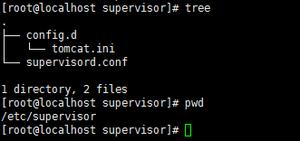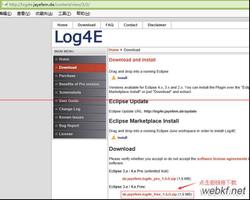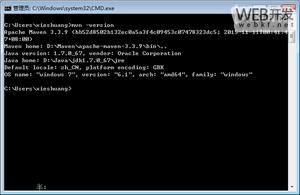Ansible安装配置

主机规划
主机名称 操作系统版本 内网IP 外网IP(模拟) 安装软件
ansi-manager
CentOS7.5
172.16.1.180
10.0.0.180
ansible
ansi-haproxy01
CentOS7.5
172.16.1.181
10.0.0.181
ansi-haproxy02
CentOS7.5
172.16.1.182
10.0.0.182
ansi-web01
CentOS7.5
172.16.1.183
10.0.0.183
ansi-web02
CentOS7.5
172.16.1.184
10.0.0.184
ansi-web03
CentOS7.5
172.16.1.185
10.0.0.185
在实际使用中并不需要对ansible配置进行修改,或者说只有需要的时候才修改ansible配置。
添加用户账号
说明:
1、 运维人员使用的登录账号;
2、 所有的业务都放在 /app/ 下「yun用户的家目录」,避免业务数据乱放;
3、 该用户也被 ansible 使用,因为几乎所有的生产环境都是禁止 root 远程登录的(因此该 yun 用户也进行了 sudo 提权)。
1# 使用一个专门的用户,避免直接使用root用户2# 添加用户、指定家目录并指定用户密码3# sudo提权4# 让其它普通用户可以进入该目录查看信息5 useradd -u 1050 -d /app yun && echo"123456" | /usr/bin/passwd --stdin yun6echo"yun ALL=(ALL) NOPASSWD: ALL" >> /etc/sudoers7chmod755 /app/
Ansible 部署流程
添加 epel 源「如果没有的话」
添加阿里云 epel 源
https://opsx.alibaba.com/mirror
Ansible 安装与版本信息查看
1 [root@ansi-manager ~]# yuminstall -y ansible 2 [root@ansi-manager ~]# whereis ansible # ansible 位置信息 3 ansible: /usr/bin/ansible /etc/ansible /usr/share/ansible /usr/share/man/man1/ansible.1.gz 4 [root@ansi-manager ~]# ansible --version # 版本信息查看 5 ansible 2.8.1 # ansible 版本 6 config file = /etc/ansible/ansible.cfg # 使用的配置文件 7 configured module search path = [u"/root/.ansible/plugins/modules", u"/usr/share/ansible/plugins/modules"] # 模块查找路径 8 ansible python module location = /usr/lib/python2.7/site-packages/ansible # ansible Python 模块位置,使用 Python 2.79 executable location = /bin/ansible # ansible 执行文件的位置
10 python version = 2.7.5 (default, Apr 112018, 07:36:10) [GCC 4.8.520150623 (Red Hat 4.8.5-28)] # Python 版本信息
11 [yun@ansi-manager ~]$ ll /usr/bin/ansible /bin/ansible # ansible 命令位置
12 lrwxrwxrwx 1 root root 20 Jun 2414:14 /bin/ansible -> /usr/bin/ansible-2.7
13 lrwxrwxrwx 1 root root 20 Jun 2414:14 /usr/bin/ansible -> /usr/bin/ansible-2.7
Ansible 配置文件讲解
Ansible配置文件查找顺序
ansible 将从多个地方查找配置文件,顺序如下:
1、从环境变量 ANSIBLE_CONFIG 中查找,如果该环境变量有值的话;
2、当前目录的 ansible.cfg 文件;「每个项目都可以有一个该配置文件,这样可以更好的管理项目,移植时也更方便。」
3、当前用户家目录的 .ansible.cfg 文件;
4、/etc/ansible/ansible.cfg 文件。
可以使用 ansible –version 命令查看使用的配置文件。
在 /etc/ansible/ansible.cfg 配置文件中有该说明
Ansible 部分配置文件讲解
实际生产中可以无需做任何修改。
1 [yun@ansi-manager ansible]$ pwd2 /etc/ansible
3 [yun@ansi-manager ansible]$ vim ansible.cfg
4 #inventory = /etc/ansible/hosts # 受控端主机资源清单
5 #library = /usr/share/my_modules/ # 所需依赖库路径
6 #remote_tmp = ~/.ansible/tmp # 远端机器,临时文件存放位置
7 #local_tmp = ~/.ansible/tmp # 本机临时文件存放位置
8 #forks = 5 # 默认并发数
9 #poll_interval = 15 # 默认轮询时间间隔(单位秒)
10 #sudo_user = root # 默认sudo后的用户
11 #ask_sudo_pass = True # 使用sudo,是否需要输入密码
12 #ask_pass = True # 是否需要输入密码
13 #transport = smart # 传输方式
14 #remote_port = 22 # 默认远程主机的端口号
15 #module_lang = C # 模块和系统之间通信的语言
16 #module_set_locale = False
17………………
18# uncomment this to disable SSH key host checking 取消注释以禁用SSH key主机检查 【默认是注释掉的,要检查主机指纹】
19 host_key_checking = False # 解开注释,即跳过检查主机指纹 【只有 root 用户执行时才有该取消指纹检测的权限】
20………………
21# logging is off by default unless this path is defined
22 # if so defined, consider logrotate
23 #log_path = /var/log/ansible.log # 开启ansible日志
24………………
25[privilege_escalation] # 普通用户提权配置「使用地方:普通用户远程提权使用」
26 #become=True
27 #become_method=sudo
28 #become_user=root
29 #become_ask_pass=False
上述的 [privilege_escalation] 配置,可在 ansible -h 中查看如何使用。如下:
1 [yun@ansi-manager ~]$ ansible -h 2……………… 3 Privilege Escalation Options: # 权限提升选项 4 control how and which user you become as on target hosts 56 -b, --become run operations with become (does not imply password
7 prompting)
8 --become-method=BECOME_METHOD
9 privilege escalation method to use (default=sudo), use
10 `ansible-doc -t become -l` to list valid choices.
11 --become-user=BECOME_USER
12 run operations as this user (default=root)
13 -K, --ask-become-pass
14 ask for privilege escalation password
15 ………………
以上是 Ansible安装配置 的全部内容, 来源链接: utcz.com/z/514224.html









